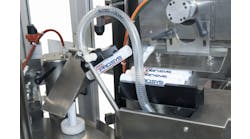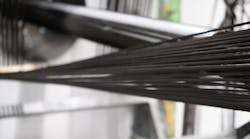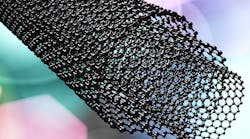When it comes to thin-wall tubes for applications, stiffness and robustness requirements have generally favored the use of metals because of their high stiffness and relatively low price.
Traditionally, composites have not been able to replace metals in these applications because glass fiber composites, while lighter, lack the necessary stiffness. Alternatively, carbon fiber composites, while being mechanically suitable, may be considered too expensive.
Generally, thin-wall composites are anything with a thickness between 0.9 and 2 millimeters and are used for a variety of applications across many different industry sectors, including camera tripods, window cleaning poles, IMR equipment, telescope poles, and camouflage support poles. Usually, metals such as aluminum and steel are used in these applications.
Sustainability trends and light-weighting are pushing manufacturers to improve operational efficiencies by reducing weight without sacrificing mechanical properties. Typically, we see this is when composites are considered, and we are always asked how could composites replace metals in these applications?
Tunable Mechanical Properties
For thin-wall tubes in industrial applications, stiffness is a key consideration. Aluminum, which has been the material of choice for many, has a stiffness of 70 gigapascals (GPa). Glass fiber, which is often the first choice for composite solutions because of its relatively low price, provides the desired weight savings compared to aluminum for tubes of equal dimensions but only has a stiffness of 35 GPa.
Therefore, to match the stiffness of aluminum, usually thicker tubes are needed, impacting existing design specifications and reducing weight savings.
Carbon fiber composites tick all the boxes in terms of mechanical properties. They are much lighter than metals and boast much higher stiffnesses, with basic carbon fiber tubes having a stiffness of 120 GPa and high-modulus carbon fiber tubes having stiffness up to 210 GPa.
However, carbon fiber composites are also more expensive than metals, with solutions costing around five times as much. This is where hybrid composites come in, providing the best of both worlds.
Hybrid composites, a combination of both glass and carbon fibers, allow manufacturers to tailor mechanical properties for any given application without changing the specified dimensions of the tubes or poles by adjusting the ratio of glass fiber to carbon fiber in the structure.
For example, for window cleaning poles, a customer might require a pole predominantly made from glass fiber for cleaning two-story buildings but need something with a higher ratio of carbon fiber, providing extra stiffness, for poles intended for cleaning five-story buildings.
Benefits of Volume Pull-Winding Manufacturing
For high-volume, cost-competitive composite production, continuous manufacturing processes such as pultrusion and pull-winding, are advantageous because they ensure consistent high-quality production and high levels of repeatability. Pull-winding is particularly useful for manufacturing hybrid composites because it allows for cross-directional control of mechanical properties and selective reinforcement of the thin-wall composite tubes, meaning there's no wasted material and costs are kept as low as possible.
It does this by combining the unidirectional alignment of fibers with the helical winding of reinforcements, resulting in the ability to control unidirectional fibers and helical winds, from a few degrees up to 90 degrees.
Manufacturing thin-wall composite tubes is possible using other manufacturing techniques such as filament winding, however, these require more manual steps and are more suited for thick tubes with large diameters. Furthermore, because they involve more manual steps and smaller manufacturing volumes, it's often the case that thin-wall composite tubes manufactured using filament winding are more expensive.














